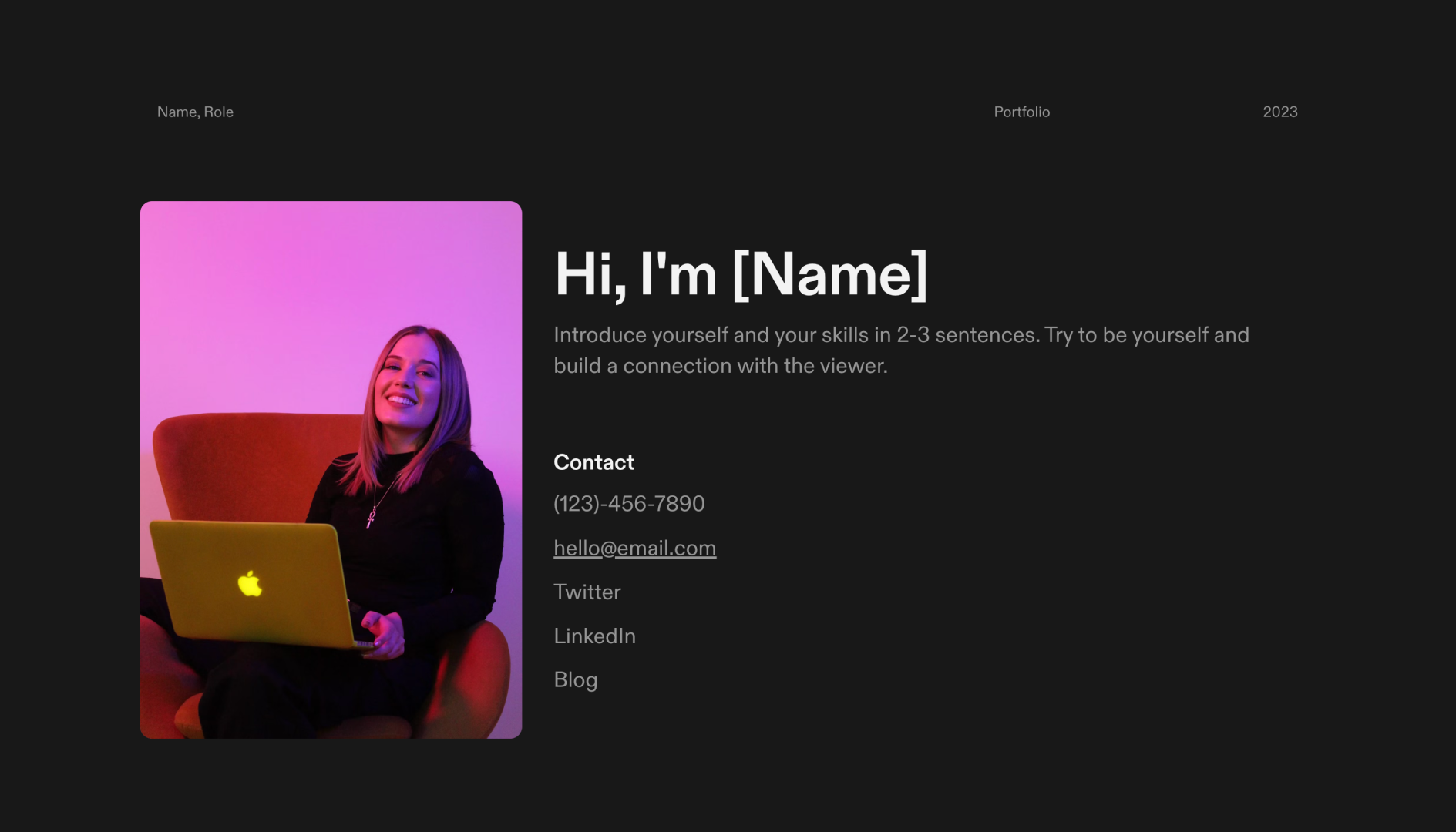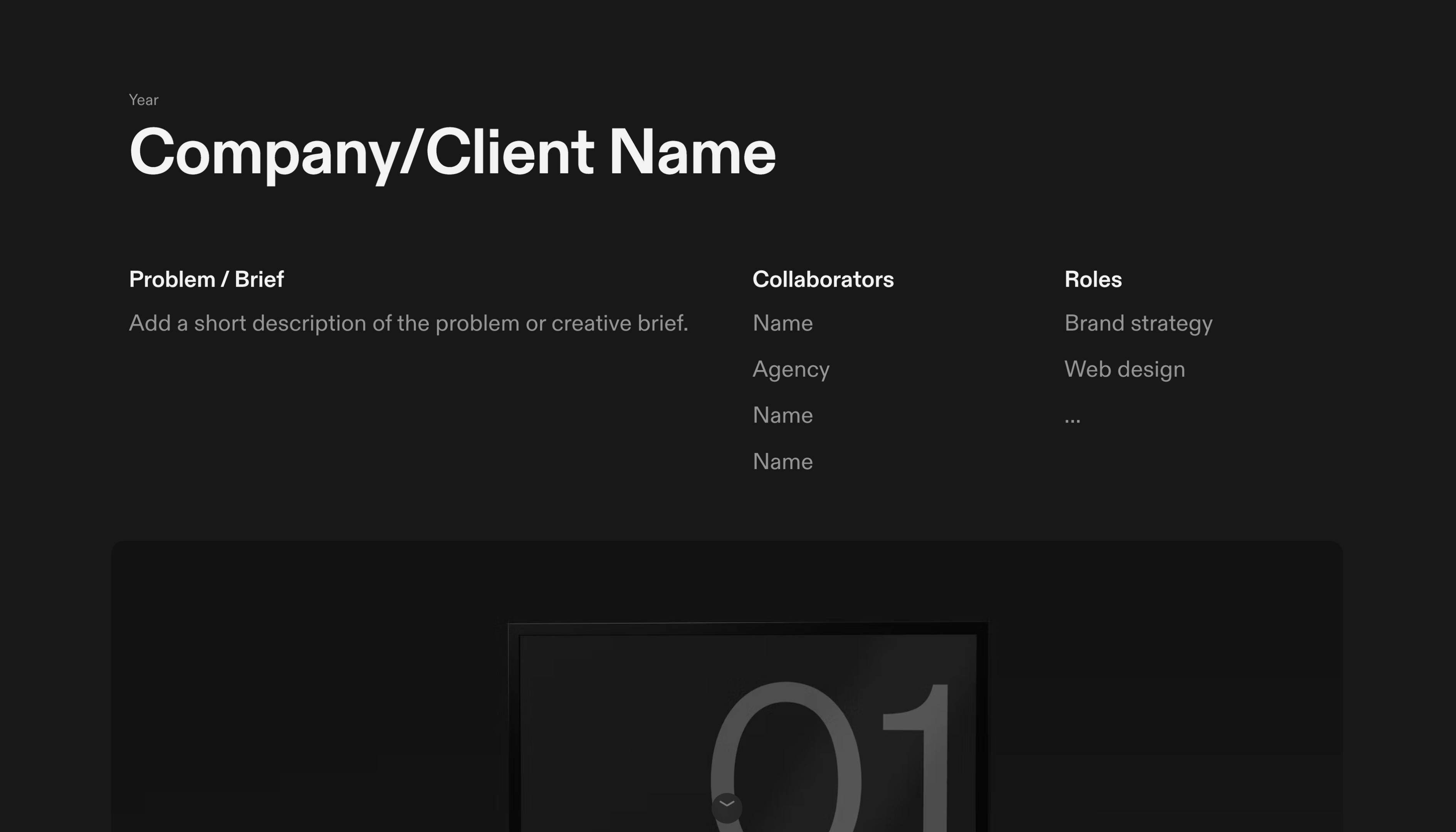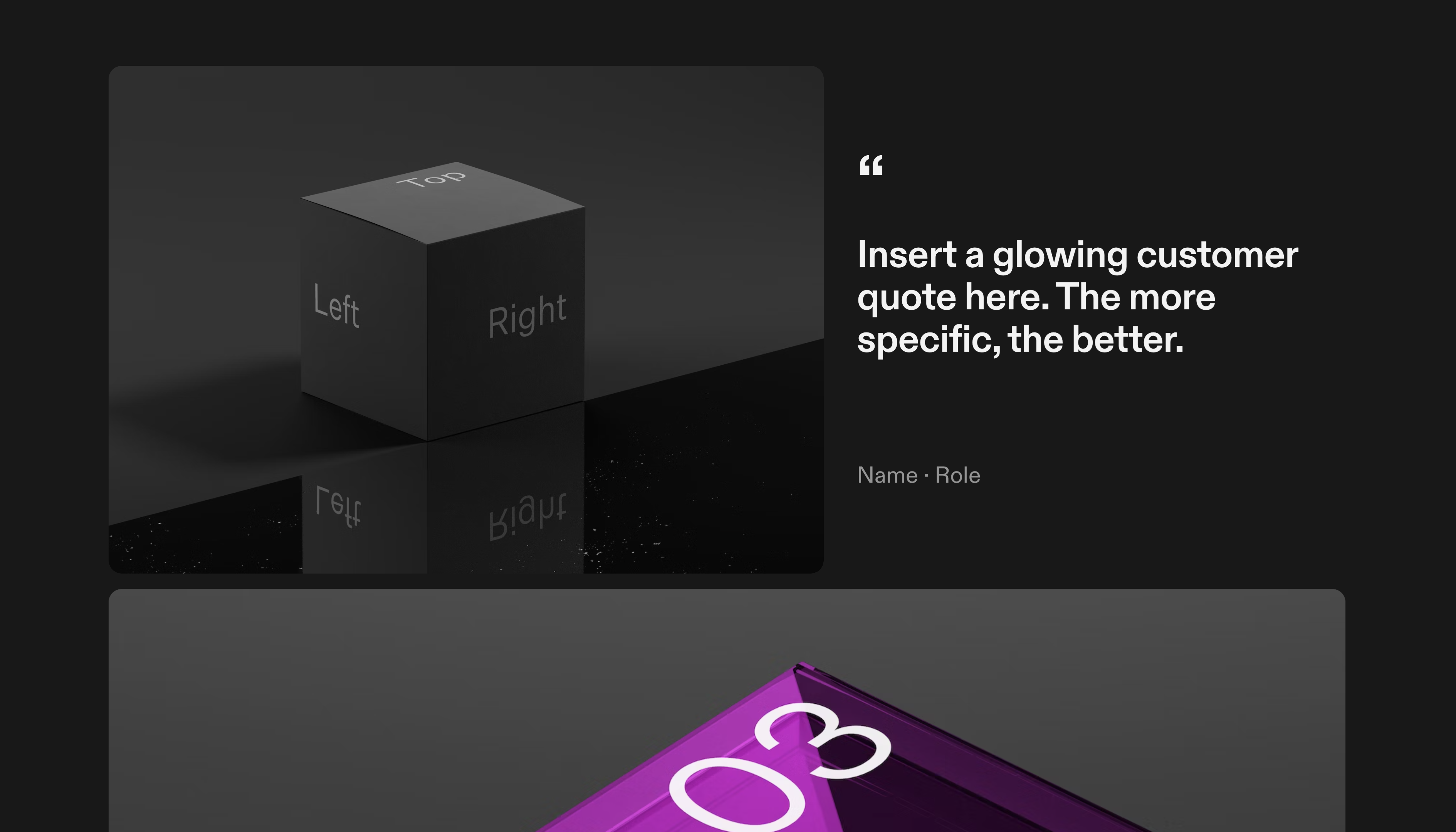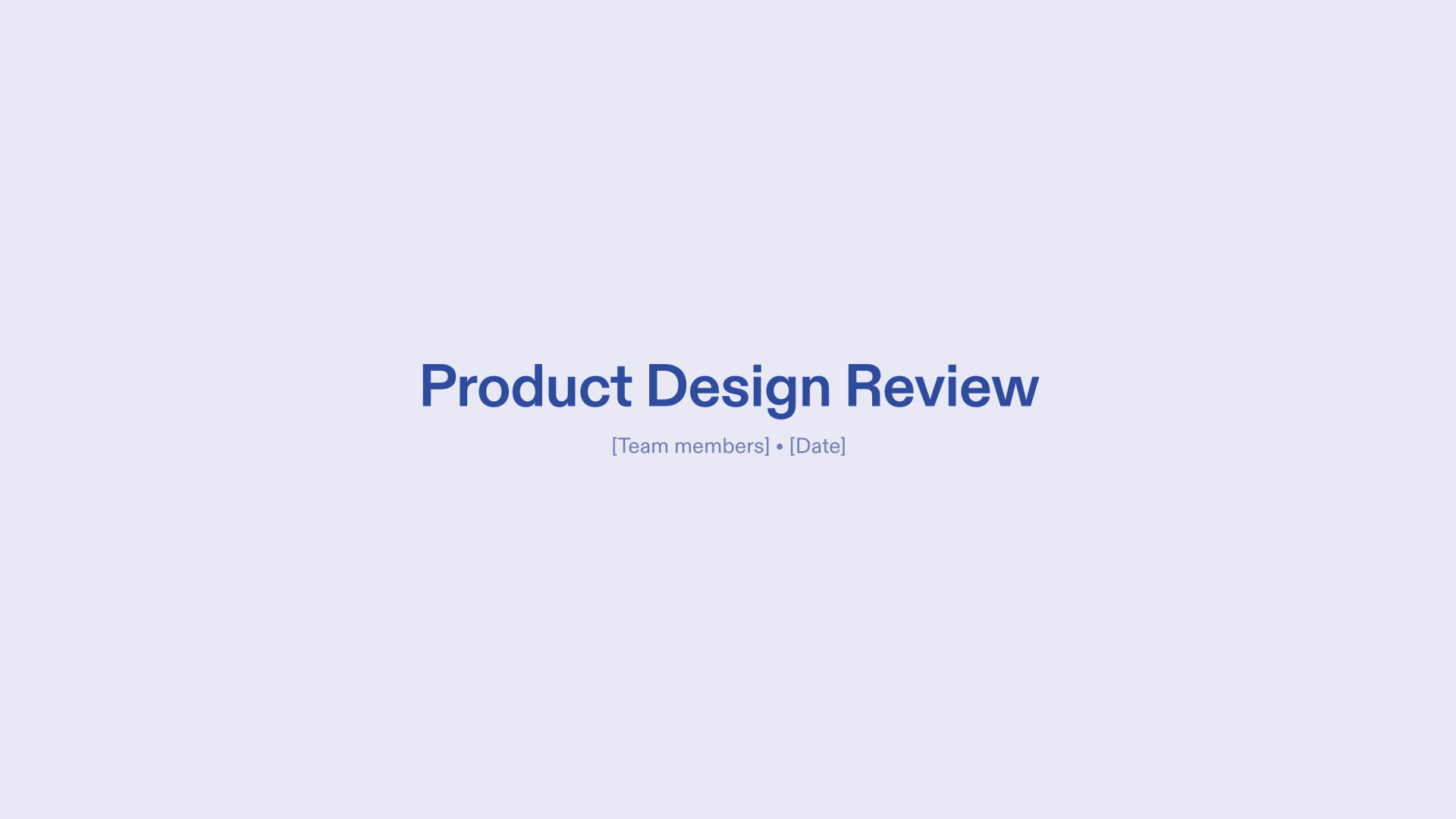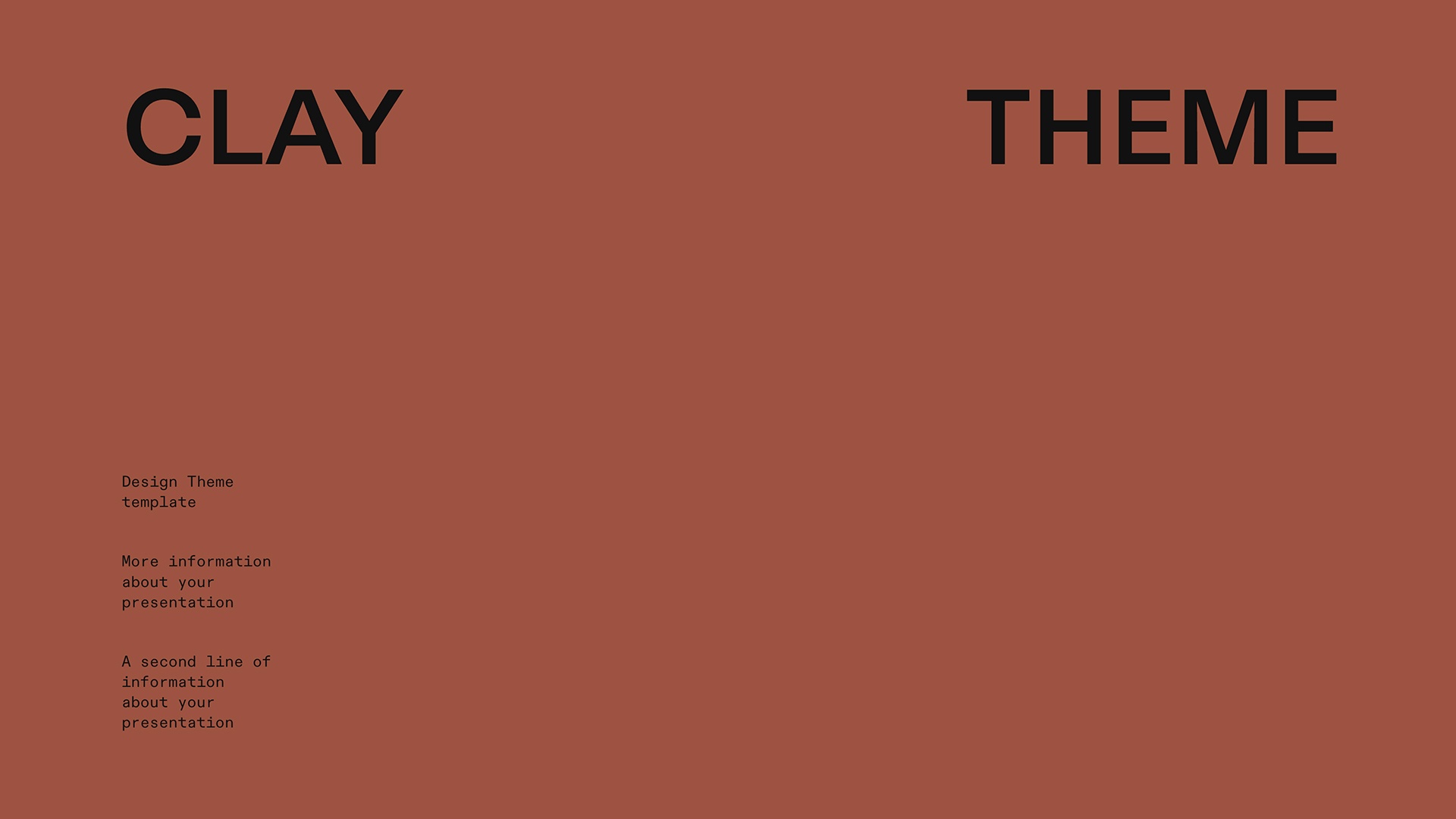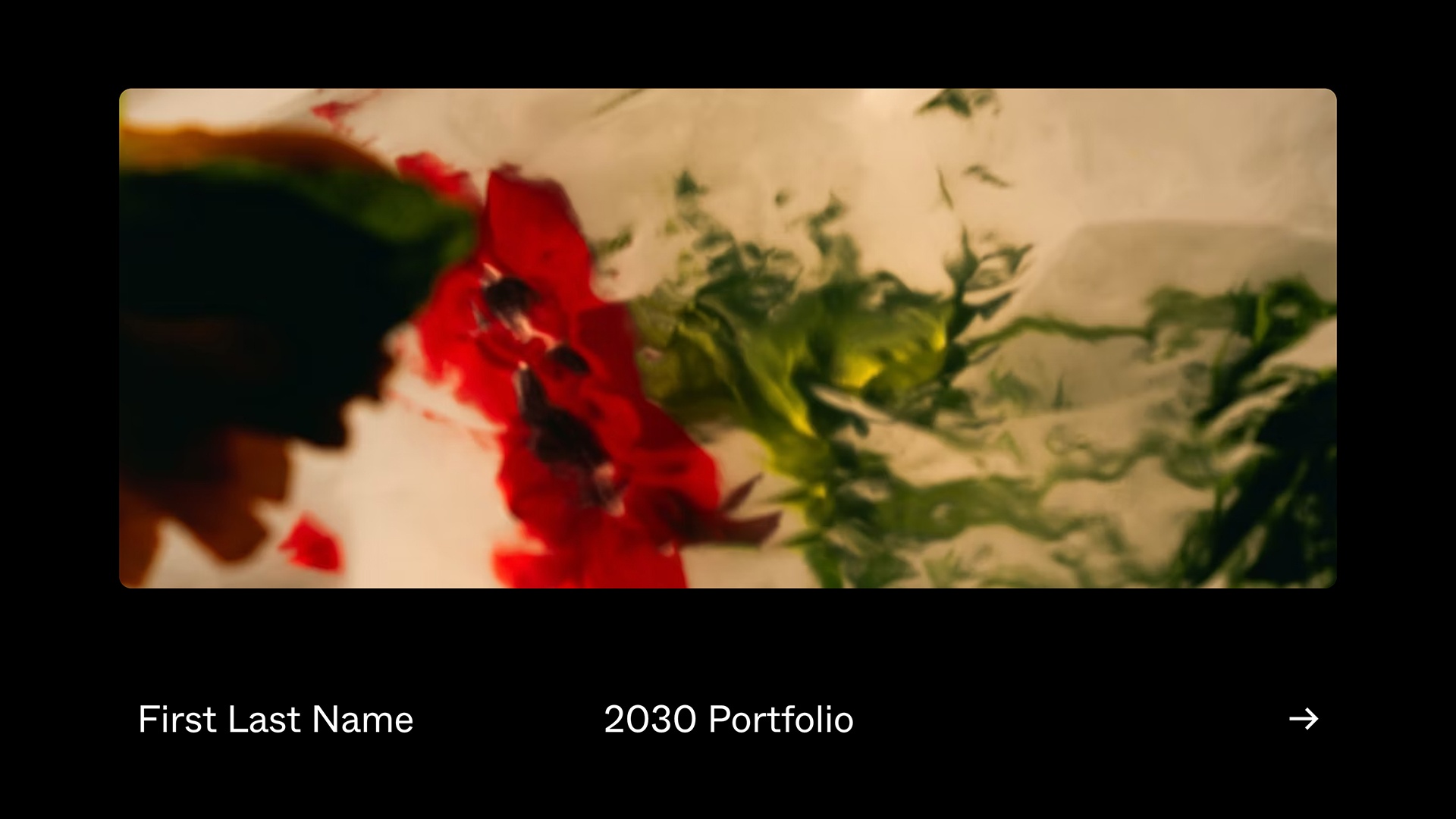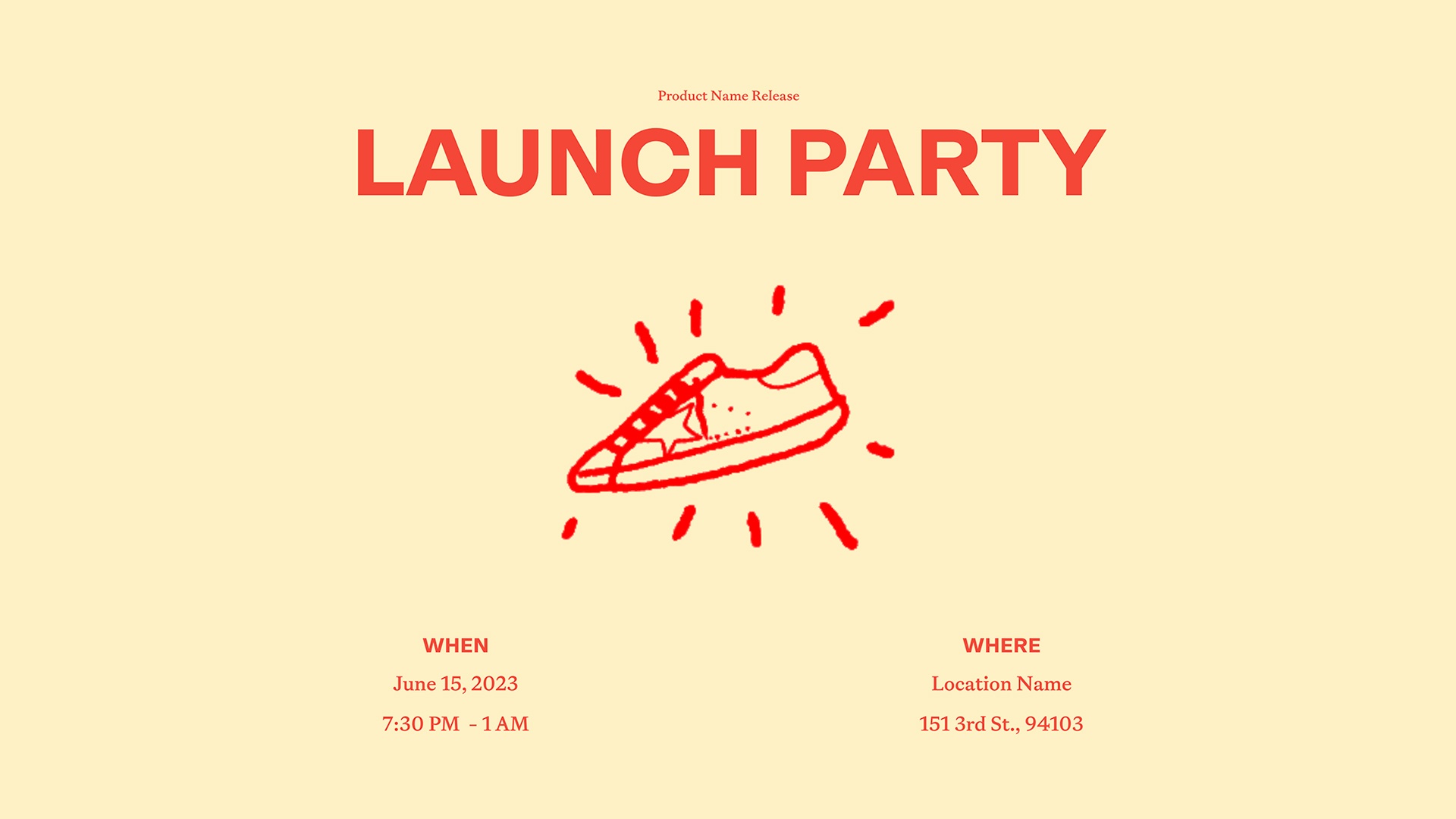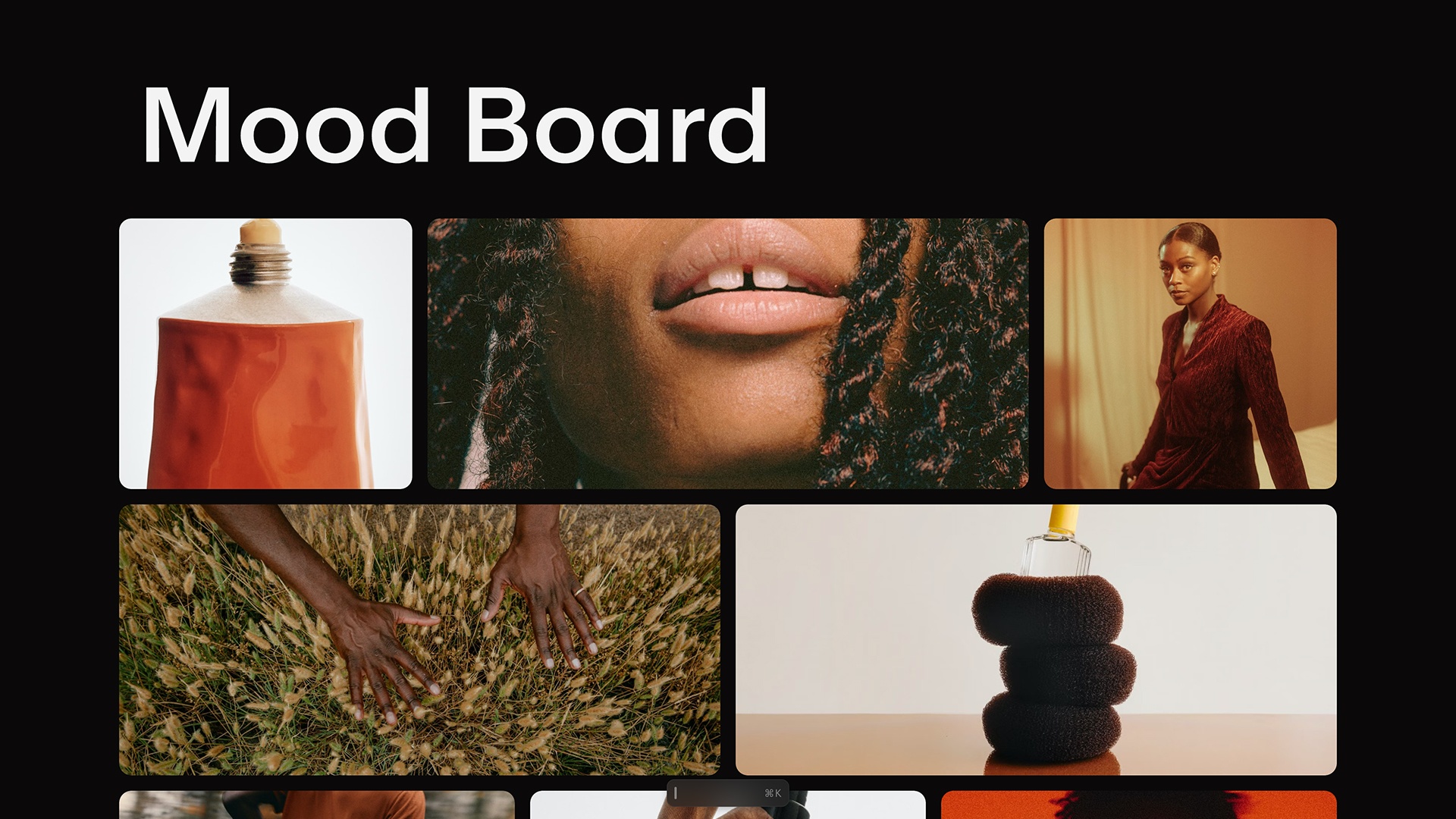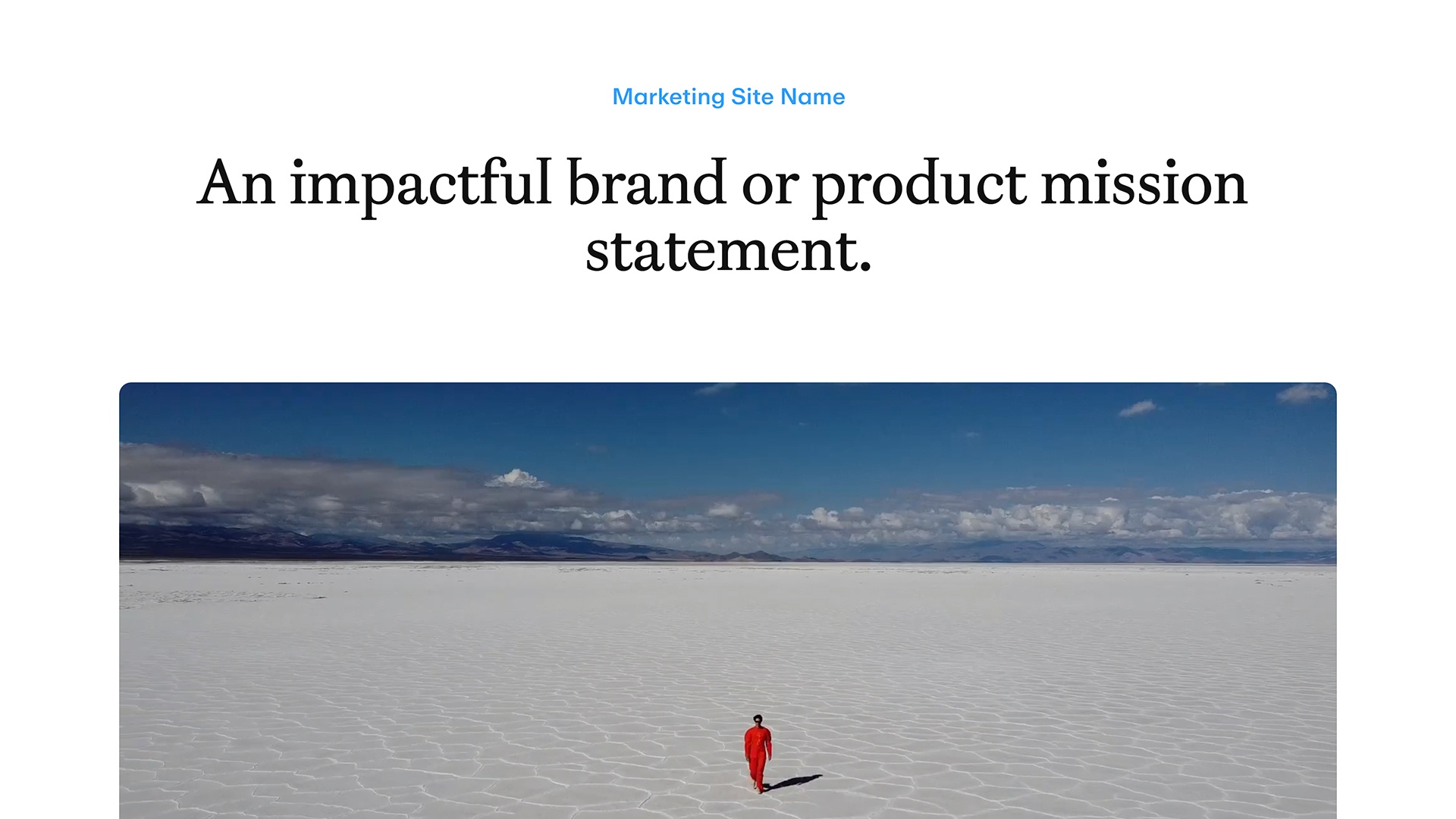Product Design Portfolio
Showcase your product design work in one place with our elegant portfolio template.
About this template
Showcase your body of work as a product designer in this concise portfolio to potential and existing clients. This design portfolio template contains features a unique format and layout and five pages where you can choose your theme, colors, font styles, and more to express the work you’ve accomplished and show specific examples of design work. You can enter your contact information, upload images, media, and more to give your clients a strong sense of the broad range of design work you have created.
Template outline
- Cover Page
- Agenda
- Problem
- Testimonials
- Opportunity
- Goals
- Product & Business Goals
- Product Solution
- Project Name
- Project Feature(s)
- Product User Flow
- Product Mockups
- Product Interactions
- Next Steps
Tell a powerful story
- Editable with AI
- Narrative Guidance
- Share or link anywhere
- Beautiful typography
- Automatic mobile layout
- Downloadable as a PDF
- AI layout generation
- AI reference sourcing
- Real-time collaboration
Craft your next great idea.
Expert Tips
Do product designers need a portfolio?
Short answer? Yes. A well-crafted product design portfolio is key for any designer looking to showcase their skills and creativity for prospective clients. Think of a product design portfolio or presentation as a visual resume that highlights the breadth and depth of your work. It’s usually the first point of contact with any potential employers or customers so it’s crucial that you rely on a professionally designed layout or template like Tome offers.
The benefits of Tome’s AI-powered portfolio template? You’ll save time because you’re not having to start completely from scratch. The process of getting started is less painstaking—we all have felt that staring-at-a-blank page. Duplicating a template in Tome takes this feeling away and streamlines the entire process. This allows you to focus on the content rather than fussing with formatting. The clean, polished look and feel of Tome’s portfolio layout effectively showcases your skills, creative assets and increases your visibility in the industry. You want to make a lasting visual and impression, so start strong with a template.
How do you build a strong product design portfolio?
As with building anything, having a strong strategy in place beforehand is recommended. Think about striking a balance between showcasing your own unique design aesthetic with demonstrating your proficiency in your space.
Here are three strong suggestions:
- Select your best work. Begin with selecting your best work that covers a variety of different aspects of product design. Think conceptual sketches, UX designs and any final product visuals or prototypes. Each project should tell a story that highlights a central problem, reviews your design process and approach and covers your proposed solutions. Relaying the impact using metrics or testimonials of the final design is optimal as well as part of the portfolio.
- Lean into engagement. The portfolio format can vary. Product designers benefit from using interactive digital portfolios because these are dynamic ways of presenting ideas and designs. They can also include 3D models and other interactive user interfaces. Making artifacts downloadable as a PDF is also effective and useful with its easy shareability across platforms.
- Choose personalized visuals. When it comes to layouts, Tome’s clean and minimalistic design allows your work to stand out. As this is a template, be sure that your own personal design aesthetic and styles is reflected as well. The more you can demonstrate your proficiency in digital design—create a bespoke variation of either a template like Tome’s, or riff off an earlier version of a portfolio wireframe of yours—the better.
What should a product design portfolio include?
Tome’s template is organized in a way that covers all of the groundwork and fundamental information needed for a product design portfolio. The suggested outline provided gives you a comprehensive leg up on other design portfolio formats and layouts if completed thoughtfully and with attention to visual detail when applicable.
Let’s break it down page-by-page.
- Cover Page: Start with a visually striking cover page that includes your name, contact information, and a tagline or brief statement about your design philosophy. This sets the tone for and makes a strong first impression.
- Agenda: Provide a clear agenda or table of contents, outlining the sections of your portfolio. This helps viewers navigate your portfolio with ease and understand what to expect from your presentation.
- Problem: In this section, describe the problem or challenge that your product design addresses. Clearly articulate the context and the specific user needs or market gaps your design aims to fill, setting the stage for your solutions.
- Testimonials: Include testimonials from clients, team members, or users. This adds credibility and provides real-world validation of your skills and the impact of your designs.
- Opportunity: Explain the market or user opportunity you identified. Discuss how your design aligns with market trends or user preferences, demonstrating your insight into the design's potential impact.
- Goals: Outline the specific goals or objectives of your product design. These should be measurable and clear, giving viewers a sense of what you aimed to achieve with your design.
- Product Solution: Present your product solution in detail. This should include your design process, the various iterations you went through, and the final design, showcasing your problem-solving skills and creativity.
- Product User Flow: Detail the user flow of your product, showing how users interact with it. Include diagrams or flowcharts that make the user journey understandable at a glance.
- Product Mockups: Show high-quality mockups of your product. This could include 3D models, digital renders, or photographs, providing a tangible sense of what the product looks like and how it functions.
- Product Interactions: Highlight key interactions of your product. Use videos, gifs, or interactive prototypes to demonstrate how users engage with the product and the thought process behind these interactions.
- Next Steps: Conclude with a section on the next steps. Discuss how the product could evolve, your vision for future development, or how you would approach scaling the design.
How many projects should be in a product design portfolio?
Think of a tripod or a solid triangle—we recommend showcasing three projects in your product design portfolio and no more. Three examples strike a perfect balance between breadth and depth. This number allows you to showcase a diverse range of skills and design thinking without overwhelming the viewer.
For a well-rounded portfolio, consider including a physical product design that highlights your ability to understand materials and ergonomics, a digital interface project to demonstrate your UX/UI design skills, and an innovative concept design that showcases your creativity and ability to think outside the box. Each project should include a clear problem statement, your design process, the final solution, and reflections on what you learned.
This approach not only displays your technical skills but also your problem-solving process and ability to learn and adapt. Remember to highlight any unique methodologies you used, how you addressed user needs, and the impact of your design solutions.
What makes a product design portfolio stand out?
For a stellar real-world example—check out Ben Uyeda’s tome.
To get started designing your own Product Design Portfolio with AI, sign up for a free Tome account and visit the Templates page for thought-starters, narrative and design inspiration, and more.
